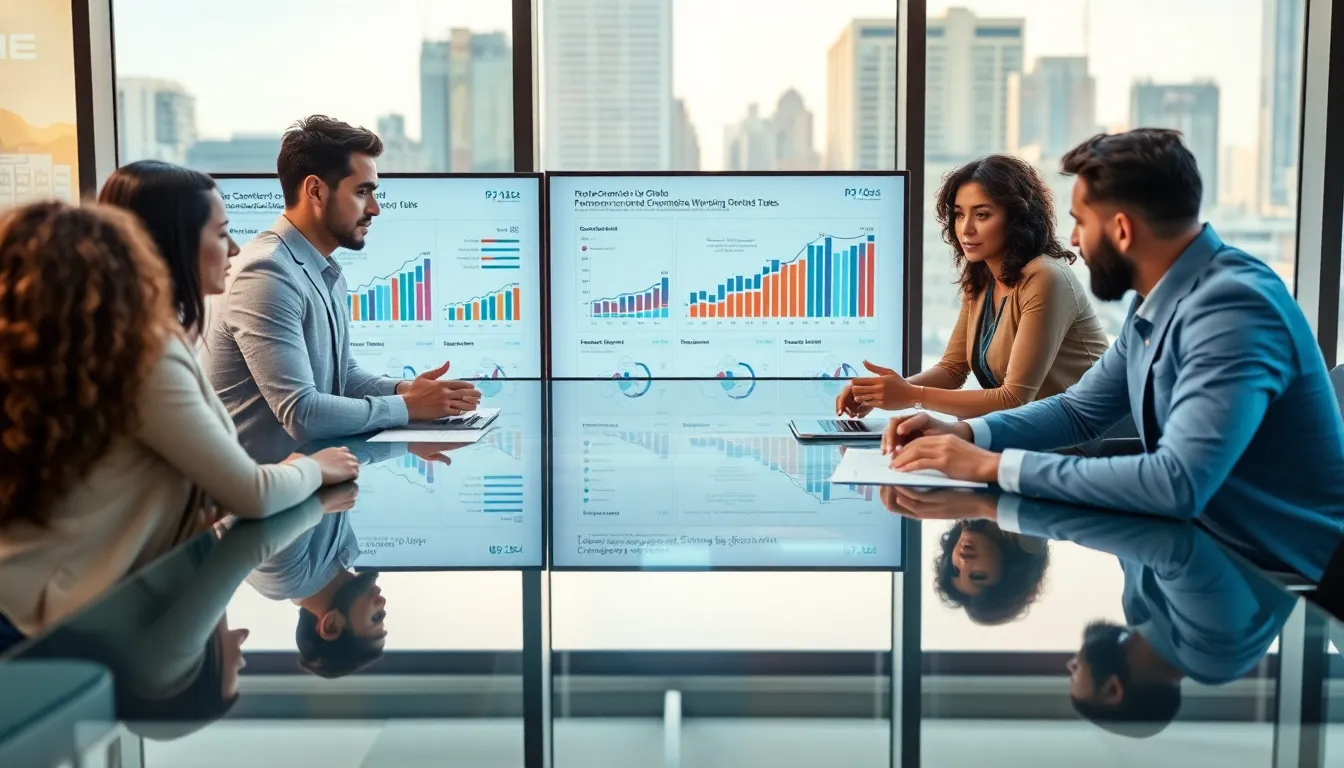Table of Contents
ToggleIn a world where change is the only constant, economic shifts keep us on our toes, like trying to balance a spoon on your nose while juggling flaming torches. They happen all around us and shape everything from our shopping habits to job markets. This article dives deep into the complex web of economic shifts, exploring what they are, how they come about, and the trends that are redefining our financial landscape. Buckle up as we traverse the unpredictable world of economics.
Defining Economic Shifts

Economic shifts refer to significant changes in the economy that affect various sectors and the overall structure of the market. These shifts can manifest in different forms, be it through changing consumer behaviors, technological innovations, or fluctuations in global trade. Understanding economic shifts is crucial for businesses, policymakers, and individuals alike, as they provide insights into where the economy might be headed. Interestingly, these shifts aren’t just about numbers: they are about people and how they navigate a constantly evolving landscape.
Historical Context of Economic Shifts
The history of economic shifts is as varied as the economies themselves. Take the Industrial Revolution, for example. It reshaped labor markets, demographics, and social structures across Europe and America. Economic historians often highlight the transition from agrarian societies to industrialized economies as a pivotal shift. Another significant period was the 2008 financial crisis, which ushered in changes in regulatory frameworks and consumer confidence. These historical narratives not only provide context but also illustrate how the past informs current economic policies and practices.
Key Drivers of Economic Shifts
Several factors contribute to economic shifts. Demographics play a significant role: for instance, aging populations in developed nations lead to changes in labor supply and healthcare needs. Also, political decisions can heavily influence economic directions. Trade policies, tax reforms, and government spending impact how effectively an economy functions. Business cycles also drive fluctuations: expansions may lead to increased investment, while recessions often necessitate adjustments in spending and savings. Understanding these drivers is essential for predicting future changes.
The Impact of Technology on Economic Shifts
Technology acts as a catalyst for economic shifts, often accelerating changes faster than anticipated. From the rise of e-commerce to advancements in artificial intelligence, technology transforms industries. For example, traditional retail has seen a massive shift towards online platforms, compelling brick-and-mortar stores to adapt or perish. Also, automation in manufacturing is reshaping labor dynamics, leading to both job displacement and the creation of new roles. As technologies evolve, they reshuffle economic landscapes, requiring businesses to innovate continually.
Globalization and Its Role in Economic Shifts
Globalization is another key factor influencing economic shifts. With barriers falling and trade agreements fostering connections, economies are more intertwined than ever. This interconnectedness allows for rapid dissemination of trends and technologies across borders. But, globalization also presents challenges, such as economic disparities and trade tensions. Countries must navigate these complexities while balancing local needs with global demands. The impact of globalization is immense, affecting everything from job markets to supply chains.
Case Studies of Recent Economic Shifts
Examining real-world examples helps illuminate the intricacies of economic shifts. The COVID-19 pandemic, for instance, triggered an unprecedented transformation in how businesses operate, with remote work becoming the norm for many sectors. Conversely, the renewable energy sector is witnessing rapid growth due to increased awareness of climate change and governmental support. These case studies reveal not only the immediate effects of these shifts but also long-term ramifications that shape our economic future.
Future Trends and Implications of Economic Shifts
As we look ahead, several trends appear poised to shape the future. Sustainability is becoming a dominant factor in economic planning, as consumers lean towards eco-friendly products. Digital currencies are also gaining traction, with potential implications for traditional banking and monetary policy. Navigating these trends will require careful consideration from policymakers, businesses, and communities. Embracing change while addressing stability will be key to thriving in a shifting economic landscape.




